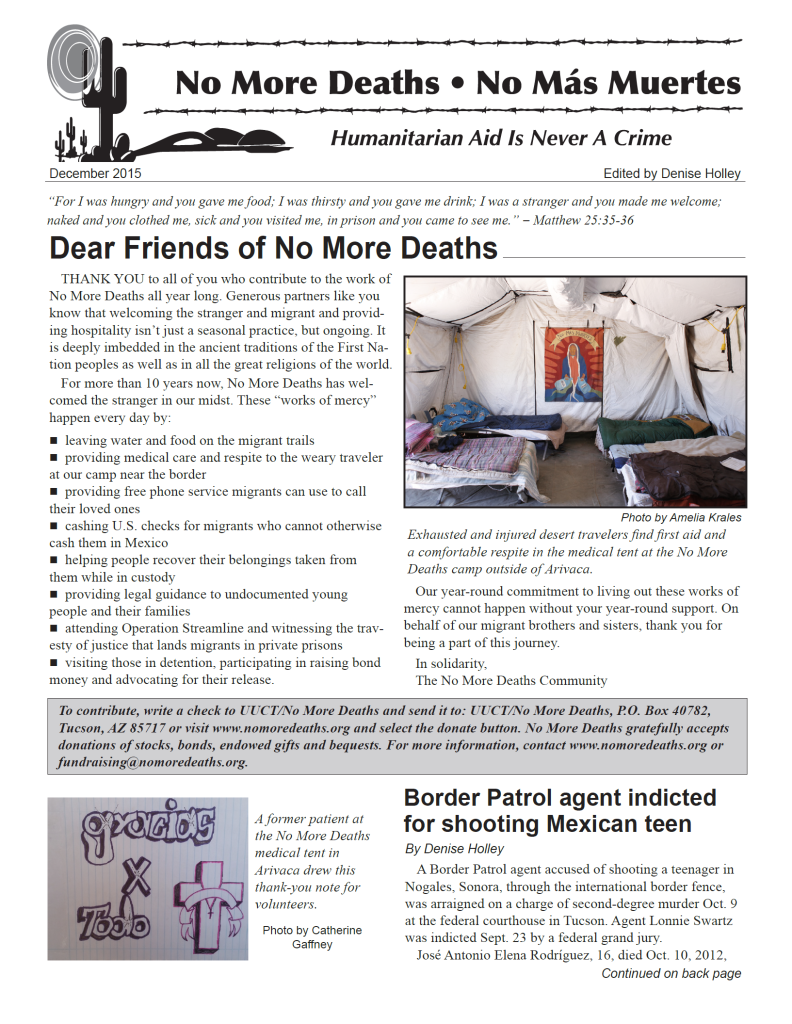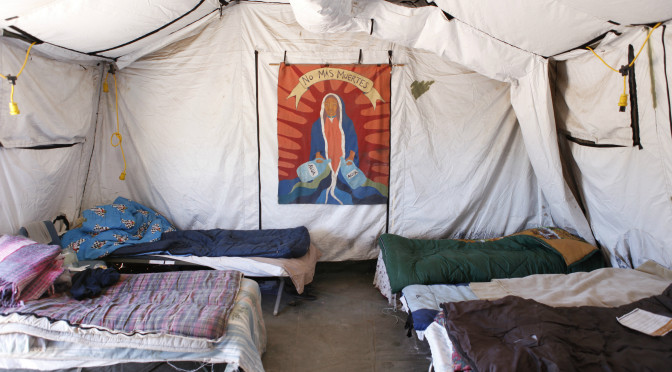Over the last year, desert-aid volunteers have expanded the scope of No More Deaths’s humanitarian work. In the Arivaca area, we cover a wider radius than ever. Working from Byrd Camp, our home base since 2004, we stock water drops in an eight-hundred-square-mile zone that ranges from rugged mountains to flat, dry cholla thickets. As enforcement and surveillance increase, migrants follow trails that climb higher and farther into remote wilderness. Volunteers travel through canyons, hills, and mountain passes where they may meet those in distress.
The westward Sonoyta–Ajo–Gila Bend corridor has tripled the area in which we provide humanitarian aid. We can put out as much as two tons of water on a single four-day trip.
In 2014, we began mapping trails and leaving water in the Sonoyta–Ajo–Gila Bend corridor, a drive of two and a half hours from Tucson. The vast seventeen-hundred-square-mile corridor has tripled the area in which we provide humanitarian aid. On a four-day trip, we can put out as many as five hundred gallons (two tons) of water, carried to the trails by our hard-worn pickup trucks and the backs of volunteers. Our patrols range from Organ Pipe Cactus National Monument, on the border, to the Barry M. Goldwater Air Force Range, an active bombing range eighty miles north.

Volunteers render emergency medical aid to migrants who are lost, sick, and often alone. Many are victims of deadly Border Patrol tactics—scattering groups using helicopters or ATVs. In many areas, we continue to find that water and food we leave out is slashed, removed, or destroyed. Our search-and-rescue team mobilizes in response to reports of missing persons, knowing that official responders often refuse or fall short. Even when we are not searching for specific people, we find them—often before anyone else knows they have gone missing.
While the number of migrants crossing through Arizona has decreased, the death toll rose this year. Until the deaths in the desert end, No More Deaths/No Más Muertes volunteers will walk the migrant trails and give aid to those we meet and those we never see.
Text: Catherine Gaffney.
Featured photo: Amelia Krales. Exhausted and injured desert travelers find first aid and a comfortable respite in the medical tent at the No More Deaths camp outside of Arivaca.

